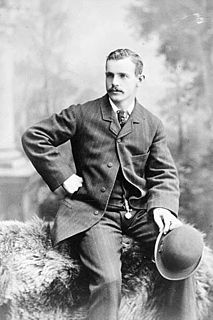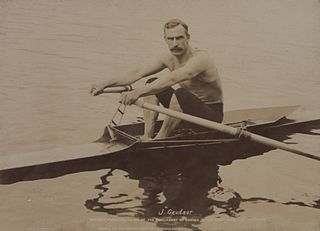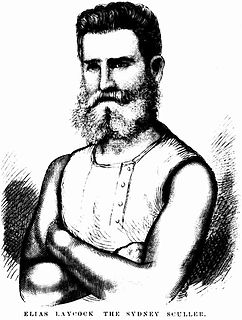English Championship
Trickett returned to Australia and apparently took the English title with him. There arose innumerable disputes as to who was the resident champion in England. To bring order out of chaos the proprietors of the “Daily Chronicle” offered a silver cup as an emblem for the English Championship and stated that it was first to be rowed for in an open regatta. The winner would then be subject to challenges under the usual challenge system. However any sculler who won it three times in succession could claim it as their personal property. This arrangement was fairly common in professional sport in those days. The regatta was held on the Tyne in March 1877 and the cup was won by Robert W. Boyd when he beat W. Nicholson of Stockton.
The following races were held subsequently.
- 28 May 1877 Boyd beat John Higgins on the Thames.
- 8 Oct 1877 Higgins beat Boyd, Thames.
- 14 Jan 1878 Higgins beat Boyd on a foul, on the Tyne.
- 3 June 1878 Higgins beat William Elliott, Thames.
Higgins thus became the permanent holder and owner of the cup. To encourage the sport the proprietors of the London “Sportsman” gave another cup to be raced for on similar conditions. The regatta was held on the Thames in September 1878 and in the final Elliott won on a foul against Boyd.
The following races were held subsequently.
- 16 Feb 1879 Elliott beat Higgins, Tyne.
- 16 June 1879 Ned Hanlan beat Elliott, Tyne.
- 15 Nov 1880 Hanlan beat Trickett, Thames. (This was also a World Championship Race.)
- 14 Feb 1881 Hanlan beat Elias C. Laycock. Thames. (This also was a World Championship Race.)
- 3 April 1882 Hanlan beat Boyd. Tyne. (Also a World Championship Race.)
At this point Hanlan was the owner of the Cup. He went on to race many World Title races and United States Championship races but it seems that he never defended his English Championship Title. Another “Sportsman Cup” was provided for by the company and this became the trophy which was raced for.
As Hanlan was Canadian the question arose again of who was, or should be, the English Champion. The next race was 20 June 1882 when J Largan of Wandsworth beat H Pearce of Sydney on the Thames.
- 26 May 1886, G J Perkins beat Australian Neil Matterson on the Thames. Matterson was also an unsuccessful contender for the World Title.
- 7 Feb 1887 George Bubear of Hammersmith beat Perkins on the Tyne.
- Bubear himself was beaten in the next race on the 13 Feb 1888 by Canadian Wallace Ross on the Thames.
From this point English sculling was at a low ebb with the centre of activity having gone to Australia and Sydney in particular.
Ross was induced to put his English Championship up for the following race. He did not defend his title.
- 9 September 1888 Henry Ernest Searle beat another Canadian William Joseph O'Connor on the Thames. This was also a World Title race. Searle died in 1889 and the next race was;
- 30 Nov 1891 when William East of Isleworth beat Perkins on the Tyne. Again he seems not to have defended it.
- 30 Jan 1893 G. Bubear beat George H. Hosmer of Boston USA, on the Thames.
- 25 Sept 1893 Tom Sullivan (rower) of New Zealand beat Bubear on the Thames.
- 16 Feb 1895 Englishman Charles R. Harding (Sullivan's trainer) beat Sullivan on the Tyne.
- On 9 September 1895 they had a re-match on the Championship Course on the Thames and again Harding won. His time was 22 minutes 59 seconds.
- In July 1896, Harding challenged the Australian Jim Stanbury for the World Sculling Championship Title. The race took place on the Thames but Stanbury defended his world title and won the wager of £500 a side. At stake was the English Title as well and this was won by Stanbury.
- 7 Sept 1896 Jacob Gaudaur, a Canadian beat Stanbury on the Thames. Gaudaur did not defend his title.
- 21 September 1898. W. A. Barry beat George Towns on the Championship Course (London,)
George Towns of Australia had gone to England in April 1897 with financial assistance from his supporters. In May 1899 won the Championship of England from W.A. Barry, a brother of Ernest Barry. The following year in September he defended his English title against a challenger from Australia, James Wray. Towns went on to win the World Championship but it was not until October 1908 that he defended his English Title. Towns travelled to England where he unsuccessfully defended his English Title on the Thames. He did not lose without a fight as his conqueror (Ernest Barry) had to row a record time over the course to win. The stakes were £400.

Edward Hanlan was a Canadian professional sculler, hotelier, and alderman from Toronto, Ontario.

Edward "Ned" Trickett was an Australian rower. He was the first Australian to be recognised as a world champion in any sport, after winning the World Sculling Championship in 1876, a title he held until 1880, when he was beaten by Canadian Ned Hanlan.
Harry Kelley (1832–1914) was a famous professional oarsman on the Thames. He became the Tyne, Thames, English and World Sculling Champion, a title he won four times.

Robert Chambers was a famous Tyneside professional oarsman. He became the Tyne, Thames, English and World Sculling Champion.

The World Sculling Championship (1863–1957), evolved from the Championship of the Thames for professional scullers.

William Beach was a professional Australian sculler. He was unbeaten as World Sculling Champion from 1884 to 1887.

Henry Ernest Searle (1866–1889), was a professional Australian sculler, who also was the World Sculling Champion from 1888 until his premature death from typhoid in 1889.
Joseph Henry Sadler was a British professional rower who twice won the World Sculling Championship. Before 1876, the English Sculling Championship was considered to be the premier event in professional sculling. In 1876, the English Title gained the World status and earlier winners were retrospectively given the title of World Champion.
Peter Kemp was one of seven Australians who each won the World Sculling Championship (Professional) between 1876 and 1905.
John McLean was one of seven Australians who each won the World Sculling Championship (Professional) between 1876 and 1957. He was born at Shoalhaven, New South Wales, on 17 September 1859.

Jacob Gill "Jake" Gaudaur, Sr. was one of two Canadians to win the Professional World Sculling Championship. Gaudaur was born in Orillia, Ontario. His first race was when he was aged 17 years and over his career he raced more than two hundred times. His professional career started in 1880.
Wallace Ross was a professional rower who was considered to be the greatest sculler to come out of Saint John, Canada. He was a champion who nearly won the World Champion single sculls title.
George Towns was the Australian Single Sculls World Champion from 1901 to 1905 and 1906 to 1907. He was the last of the seven Australian World Sculling Champion who between them held the title almost uninterrupted from 1876 to 1909.

Elias Connell Laycock was an Australian competitive rower who three times tried to become the World Sculling Champion.

Michael Rush was an Irish Australian sculler noted for his one-on-one competitions against champion opponents, which drew vast crowds of spectators. He attempted to win the World Sculling Championship.
William Elliott was born at Hay Farm, Northumberland, 28 November 1849 and was the Professional Sculling Champion of England. He stood five feet seven and one half inches in height and untrained he weighed 176 pounds; trained, 167 pounds.
Charles R. Harding was an English professional single sculler who became the Champion of England and was a contender for the World Sculling Championship. He was born in London in 1867 and his occupation was that of a waterman. Like many of the professional English scullers, he had won the Doggett's Coat and Badge, but at 5 ft 5 ½ in and 9 st 5 lb he was not regarded as one of the heavy men. He made a name for himself in 1883, when he, at 16 years old, won the Chelsea Coat and Badge, and a year later, the Putney Coat and Badge. He was reported in the mid-1890s that “he pulls a beautiful even stroke, gets well over his sculls, while his leg-work is greatly admired.”
Neil Matterson was an Australian professional sculler who attempted to win the World Sculling Championship, and although he was unsuccessful in that, he went on to coach Henry Ernest Searle who did become the World Champion.

William Joseph O'Connor was a professional oarsman who attempted to win the World Sculling Championship. He was also a tavern-keeper and long distance walker. He was born in Toronto, and grew up in the cities' Irish district of Corktown. His parents were Michael and Ellen O'Connor and he died unmarried in Toronto.
James Stanbury was a world champion sculler.
This page is based on this
Wikipedia article Text is available under the
CC BY-SA 4.0 license; additional terms may apply.
Images, videos and audio are available under their respective licenses.









